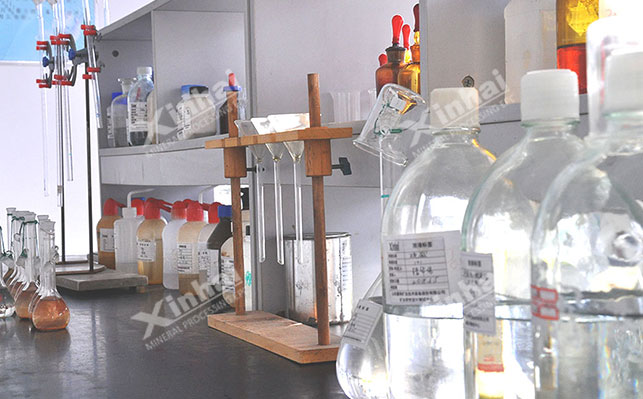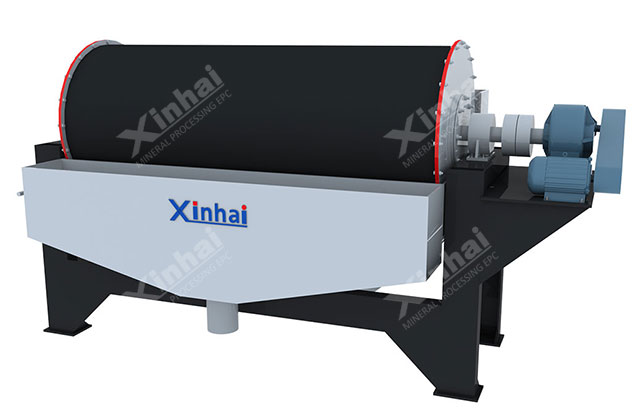In the process of steel smelting, there are many harmful elements, phosphorus is one of them. The high content of phosphorus seriously affects the quality of steel. Phosphorus in high phosphorus iron ore is generally associated with other minerals in the form of apatite or fluorocarbon apatite, and the particle size is fine, sometimes even 2 μ M below, so high phosphorus iron ore is difficult to concentrate.
In recent years, relevant personnel have conducted more in-depth research on iron ore dephosphorization process. The main processes include reverse flotation, selective clustering, acid leaching, high gradient magnetic separation, oxidation roasting acid leaching, microbial dephosphorization, etc.

With the continuous emergence of new high-efficiency flotation reagents, reverse flotation is still the main method for dephosphorization of iron ores. In order to reduce the cost of reverse flotation or further reduce the phosphorus content, the combination of magnetic separation and reverse flotation has shown its advantages. For example, Changsha Research Institute of Mining and Metallurgy, with RA-315 as the collector, has conducted laboratory small-scale test and research on Tilden high phosphorus iron ore comprehensive sample provided by Toshi Company of the United States by using reverse flotation process. Using Ca2+as quartz activator, starch as iron mineral inhibitor and RA-315 as collector, the mixed reverse flotation of phosphorus and silicon was carried out, and the closed circuit test indexes of iron grade 65.50%, phosphorus content 0.03% and iron recovery 79.67% were obtained.
Because the particle size of impurity minerals such as apatite is very fine, in order to dissociate its monomer, it often needs to be finely ground, which makes it difficult to capture by conventional methods, and the recovery rate is low. In recent years, the rapid development of selective cluster separation technology provides a broader prospect for the separation of micro fine minerals. The selective cluster separation process mainly includes polymer flocculation separation, hydrophobic cluster separation, magnetic agglomeration and magnetic seed cluster separation, and composite cluster separation.

The "Ningxiang type" oolitic hematite resources in western Hubei are rich, accounting for about 4% of the national iron ore reserves. However, due to the complex nature of the ore, high phosphorus content (average 1% left stone), difficult to concentrate and smelt, it has not yet been effectively developed and utilized. Due to the complex nature of the ore, dephosphorization by mechanical beneficiation method has not yet been fully qualified.
Dephosphorization of high phosphorus magnetite and hematite by ultrasonic acid leaching was studied. The final result is that the phosphorus content is 0.07% when using sulfuric acid (1/14 of the mechanical stirring acid leaching), 0.06% when using hydrochloric acid (1/7 of the mechanical stirring acid leaching), and the iron recovery rate is more than 95%.

The development of a new type of high gradient magnetic separator has greatly reduced the lower limit of effective separation particle size, better solved the problems of blockage and inclusion, and provided a new way for dephosphorization of high phosphorus iron ore.
SLon-1500 vertical ring pulsating high gradient magnetic separator was used in high intensity magnetic separation in industrial test of dephosphorization of concentrate, and good test results were obtained.
The method is to mix the ore with calcium chloride, then calcine it at 900~1000 ° C, and then leach phosphorus with inorganic acid. The leaching rate of phosphorus varies with the type of acid used. Generally, the leaching rate of nitric acid is higher, followed by hydrochloric acid, and the leaching rate of sulfuric acid is lower.
In recent years, the research on microbial treatment of mineral resources is very active. As far as phosphorus dissolution is concerned, many kinds of bacteria, fungi and actinomycetes have been found to have phosphorus solubilization. They reduce the pH value of the system mainly by metabolizing acid, so as to dissolve phosphorus minerals. With this method, the dephosphorization rate can reach 76.89%, and the iron loss rate is 3.87%, which provides a new way for dephosphorization of high phosphorus iron ore.
In the future, research on high phosphorus iron ores will focus on new flotation reagents, rational design of grinding process, development of new flotation equipment, further optimization of leaching method and microbial dephosphorization method, and reduction of environmental pollution.